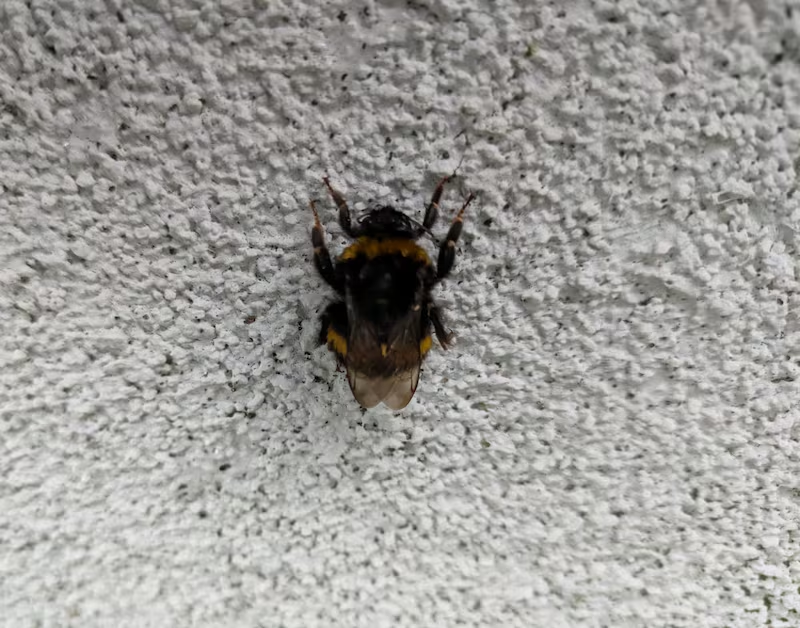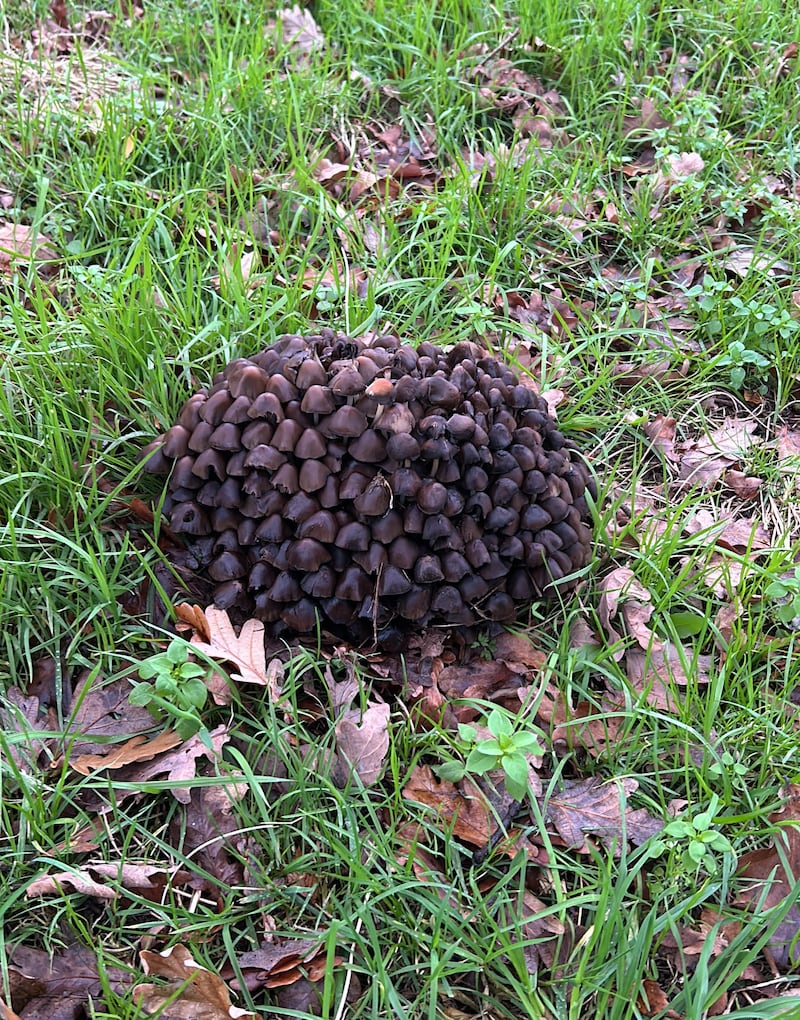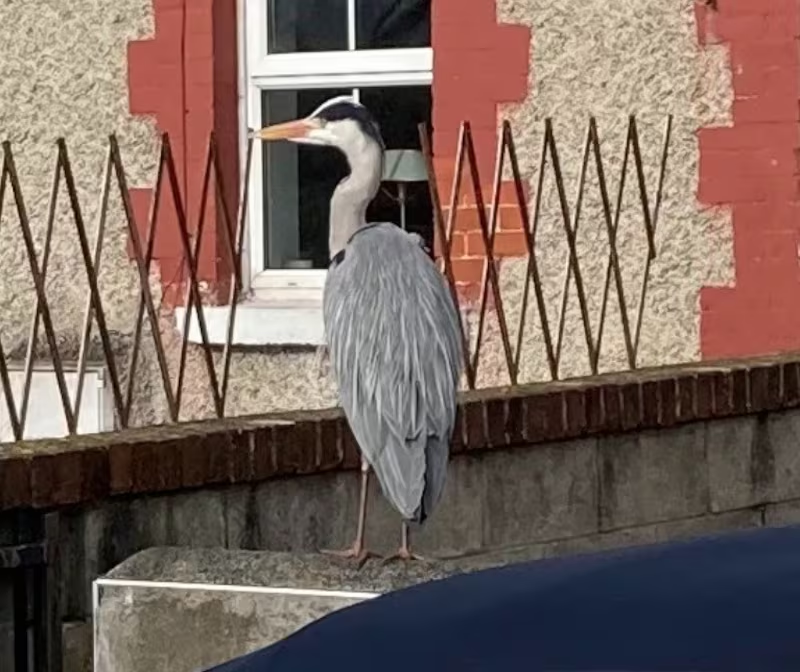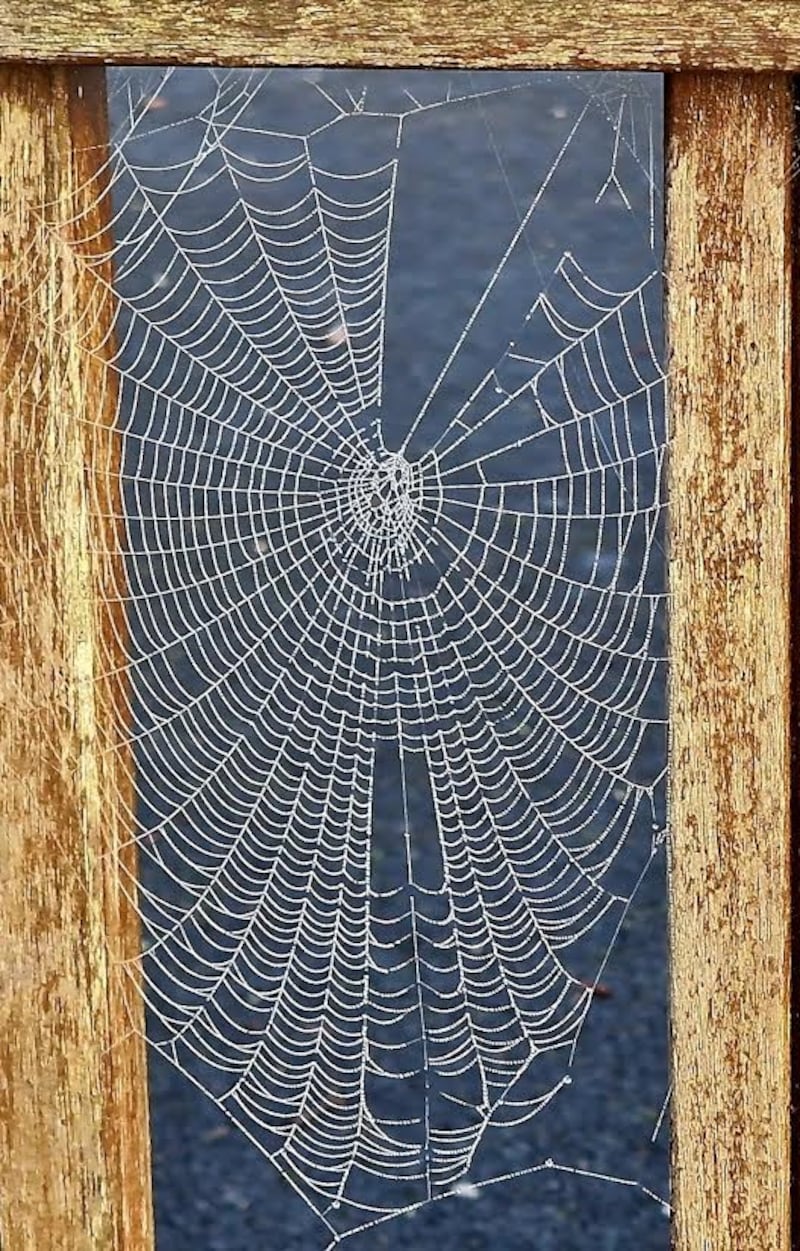I found this beautifully coloured snail atop a sand dune on Ventry beach in Co Kerry. Is it native or did it float ashore on something from a distant land? Frank Folan, Ballyvaughan, Co Clare
Well, if it did, it is doing very well to be still alive, with its head emerging at one end and its rear at the other end of the purple shell. The black band around the bottom lip of the shell gives the game away despite its most unusual colouring. It is the brown-lipped snail, which is variable in colour and occurs on dunes as well as woodlands and hedgerows.

We found this huge bumblebee clinging to our back wall on January 31st. It seems very early to be out and about. Can we do anything to help her? Hugo Lee, Kilmacud, Dublin
This is a queen bumblebee emerging from her overwintering quarters. It is most likely a white-tailed bumblebee, which normally emerges in February, so it is a little early all right. The best help would be to have some early flowering plants full of nectar and pollen in the garden for her to feed on, such as crocuses, grape hyacinths and snowdrops – but not daffodils, which contain neither. Failing that, a feed of sweetened water would give her some energy to get going.
READ MORE

My Dad and I were recently walking to school and saw this bunch of mushrooms. I thought it was a wig. Can you let me know some information about them please? Sylvia McNicholas, Dublin
Not a wig, no, but a very dense cluster of clustered brittlestems - Psathyrella multipedata. Initially, the mushroom has light brownish caps that darken with age, as in the image. There can be up to 70 individual mushrooms in the group. And while the name suggests that it has many “feet”, they all arise from a single, deep-rooting stem that is colonising buried wood. The mushroom is widespread in Europe, but not particularly common here. It can be found on soil, lawns and roadside grass verges through late autumn into winter.
[ What is this mushroom seen in our local park?Opens in new window ]

Are herons becoming more relaxed around people? I took these two photos about six months apart on the same stretch of the Liffey in Lucan. The first bird was perched on a garden wall a few yards from someone’s front door; the second was oblivious to our presence a few feet away, so intent was it on watching the river. Declan Murray, Dunboyne, Co Meath
Where there are a lot of walkers, herons on rivers and canals have become accustomed to people, and do not fear them. In areas where people are few and far between, herons are as shy as ever and depart with ponderous wing flaps at the mere approach of a person. The wild herons that visit Dublin Zoo are as bold as brass - they swipe burgers from unwary outside diners – a trick they have no doubt learned from the herring gulls.

We found these webs outside our school on a foggy morning last December. Can you tell us about them and the spiders who made them? The children of Scoil Bhride, Shantalla, Co Galway
There were several photos of different webs. This beautiful one was made by the missing-sector orbweb spider, Zygiella x-notata. Its web has an open section with no cross threads at the top right. In the centre of this empty section is a single thread. The spider is hiding at the other end of this, holding on to it with its front legs so it can feel when something gets stuck in the web and rush out to pounce.
Please submit your nature query, observation, or photo, with a location, via irishtimes.com/eyeonnature or by email to weekend@irishtimes.com




















